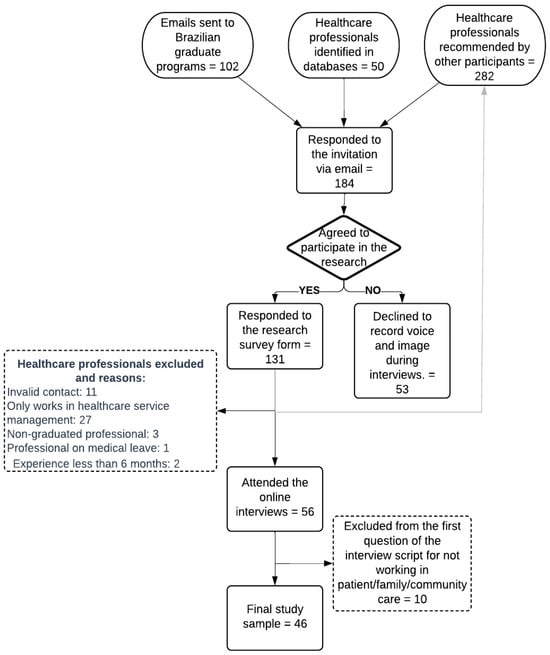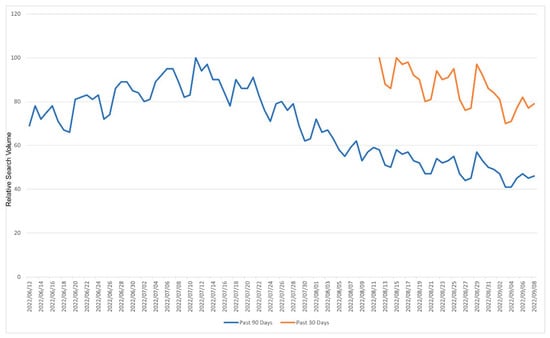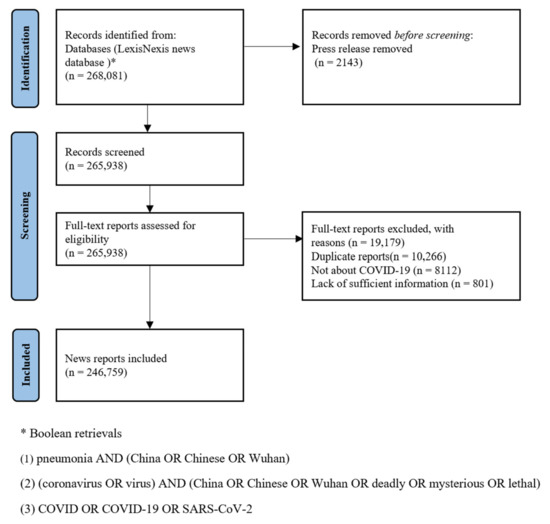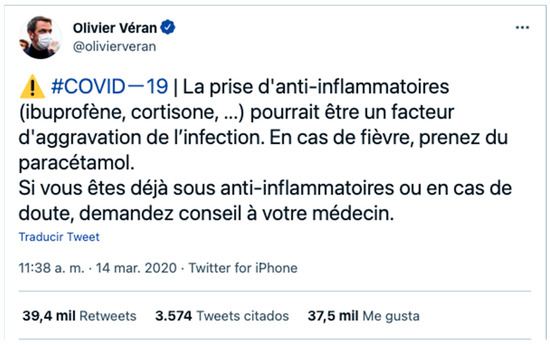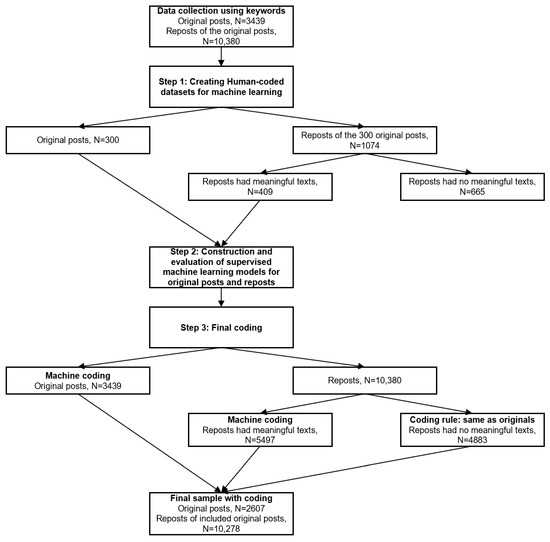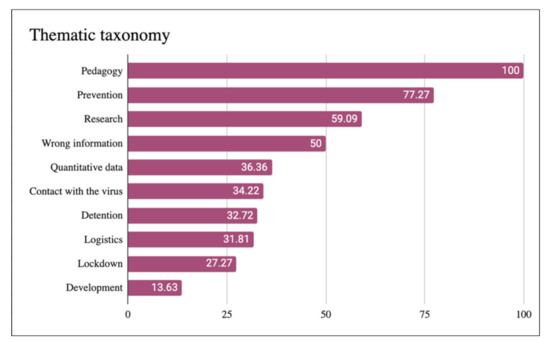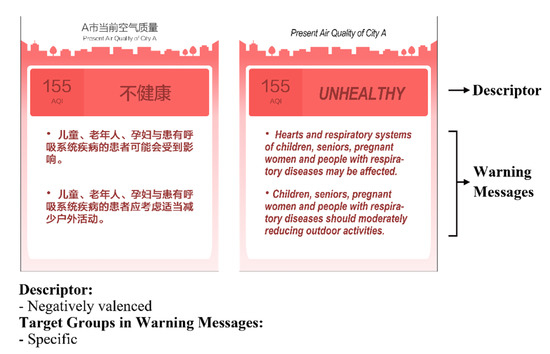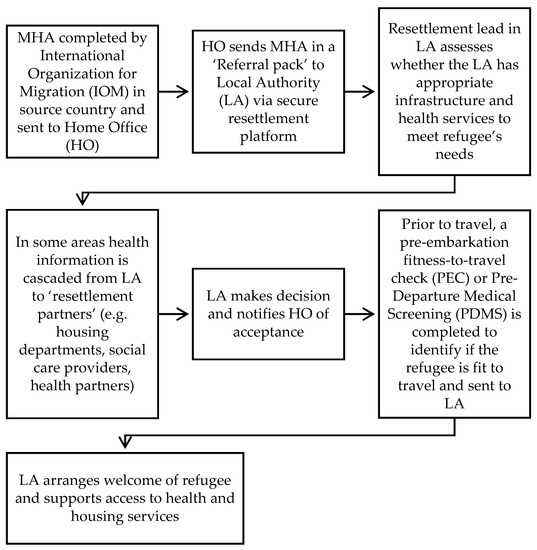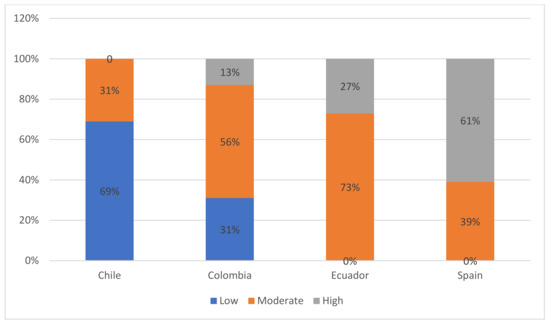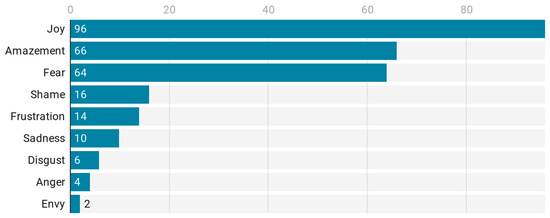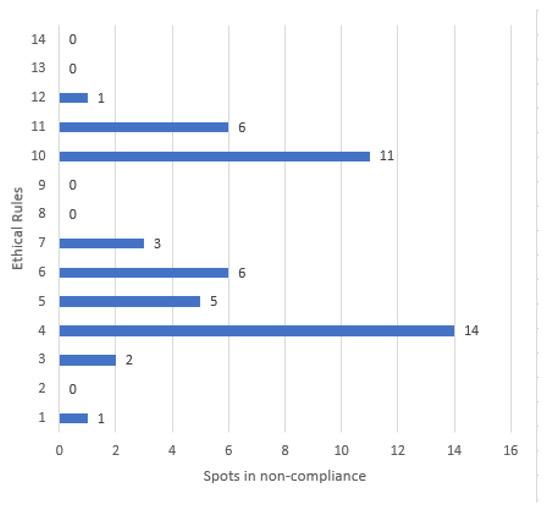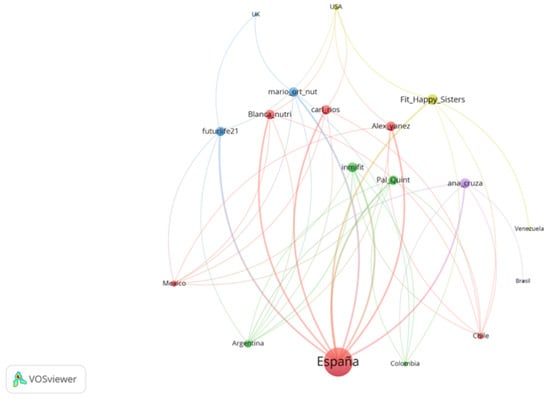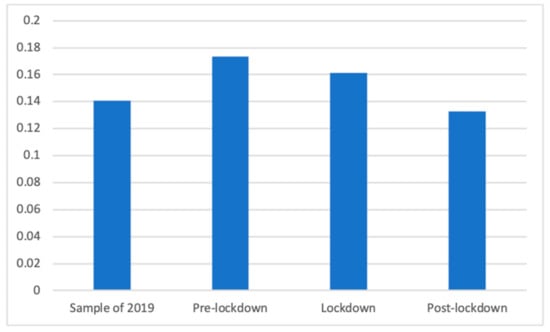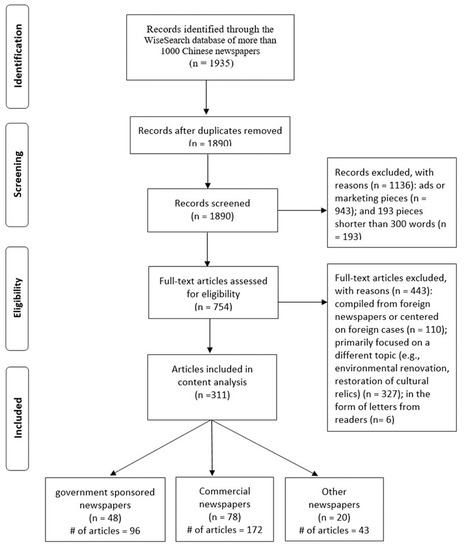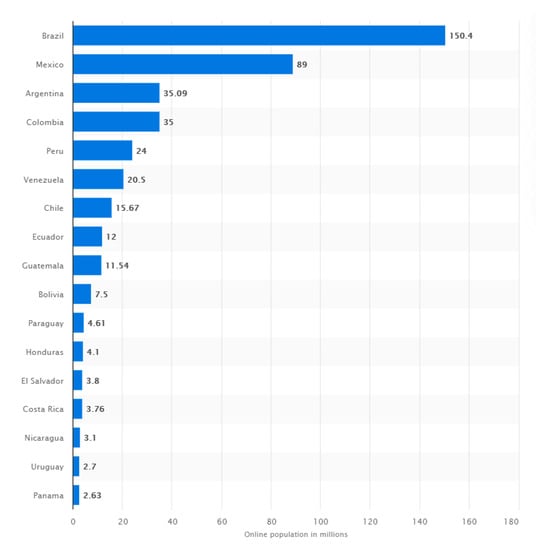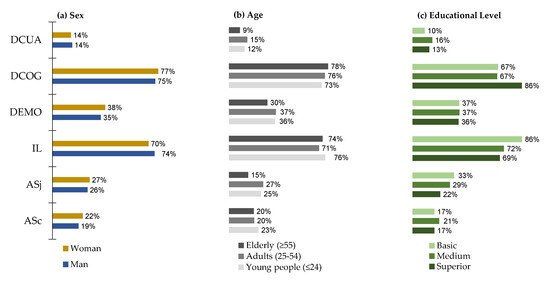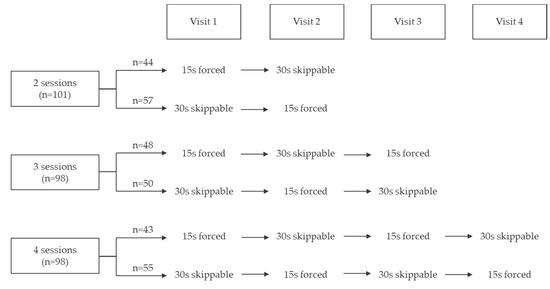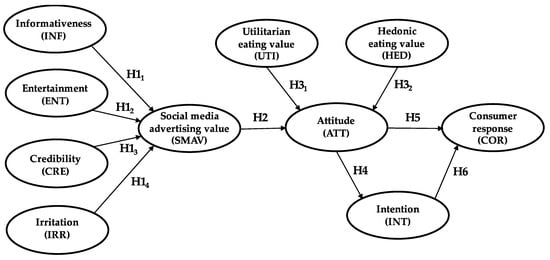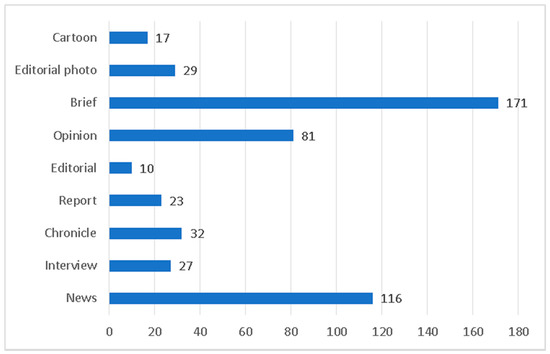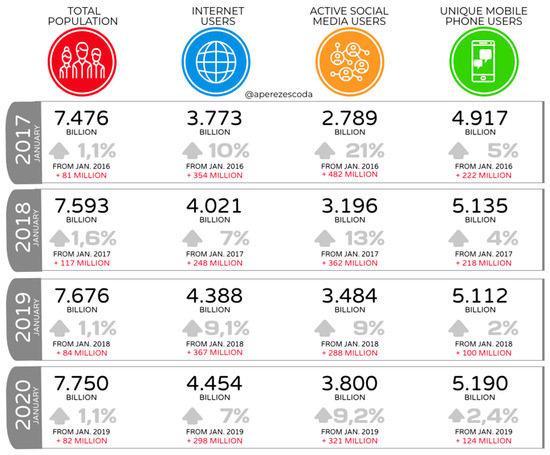Mass Communication, Digital Media, and Public Health
Share This Topical Collection
Editors
 Dr. Luis Miguel Romero-Rodríguez
Dr. Luis Miguel Romero-Rodríguez
 Dr. Luis Miguel Romero-Rodríguez
Dr. Luis Miguel Romero-Rodríguez
E-Mail
Website
Guest Editor
Department of Communication and Sociology, Rey Juan Carlos University, Madrid, Spain
Interests: mass communication; digital media; media education; social media; journalism; disinformation; advertising
Special Issues, Collections and Topics in MDPI journals
 Dr. Clara Muela-Molina
Dr. Clara Muela-Molina
 Dr. Clara Muela-Molina
Dr. Clara Muela-Molina
E-Mail
Website
Guest Editor
Rey Juan Carlos University, Fuenlabrada, madrid, Spain
Interests: advertising; health communication; misleading advertising; creativity
 Dr. Luisa Agante
Dr. Luisa Agante
 Dr. Luisa Agante
Dr. Luisa Agante
E-Mail
Website
Guest Editor
Universidade do Porto, Porto, Portugal
Interests: consumer behaviour; children; eating habits; food advertising
 Dr. Daniel Catalan-Matamoros
Dr. Daniel Catalan-Matamoros
 Dr. Daniel Catalan-Matamoros
Dr. Daniel Catalan-Matamoros
E-Mail
Website
Guest Editor
Department of Communication Studies, University Carlos III of Madrid, 28903 Madrid, Spain
Interests: health communication; risk communication; public health; risk perception; healthcare technology assessment
Special Issues, Collections and Topics in MDPI journals
Topical Collection Information
Dear Colleagues,
We are organizing a Special Issue on Mass Communication, Digital Media, and Public Health in the International Journal of Environmental Research and Public Health. For detailed information on the journal, we refer you to https://www.mdpi.com/journal/ijerph.
The media and social networks are shapers of public opinion and citizen behavior. In this sense, their study becomes of vital importance for the establishment of public policies on health information under the needs of the current digital ecosystem and understanding its complexities, audiences, and phenomena. Aspects such as the weaknesses in media self-regulation, censorship systems, self-censorship, misleading advertising, misinformation, and fake news began at the height of COVID-19 and were pointed out as urgent matters by various international organizations such as the European Commission (EC) or the World Health Organization (WHO) while states were looking for the most suitable formulas to avoid information vices, especially in such sensitive areas as public health information.
Researchers in the field of health communication have conducted studies to prevent a more significant impact of misinformation ranging from the promotion of media and health literacy for citizens to the establishment of fact-checking systems. However, aspects such as misleading advertising, health apomediation promoted by social networks, and the phenomenon of ‘influencers’ in this field are adapting their dynamics and content mechanics at a much faster pace than communication research.
This Special Issue is open to the subject area of Mass Communication, Digital Media, and Public Health. The keywords listed below provide an outline of some of the possible areas of interest.
Dr. Luis Miguel Romero-Rodríguez
Dr. Clara Muela-Molina
Dr. Luisa Agante
Prof. Daniel Catalan-Matamoros
Guest Editors
Manuscript Submission Information
Manuscripts should be submitted online at www.mdpi.com by registering and logging in to this website. Once you are registered, click here to go to the submission form. Manuscripts can be submitted until the deadline. All submissions that pass pre-check are peer-reviewed. Accepted papers will be published continuously in the journal (as soon as accepted) and will be listed together on the collection website. Research articles, review articles as well as short communications are invited. For planned papers, a title and short abstract (about 100 words) can be sent to the Editorial Office for announcement on this website.
Submitted manuscripts should not have been published previously, nor be under consideration for publication elsewhere (except conference proceedings papers). All manuscripts are thoroughly refereed through a single-blind peer-review process. A guide for authors and other relevant information for submission of manuscripts is available on the Instructions for Authors page. International Journal of Environmental Research and Public Health is an international peer-reviewed open access monthly journal published by MDPI.
Please visit the Instructions for Authors page before submitting a manuscript.
The Article Processing Charge (APC) for publication in this open access journal is 2500 CHF (Swiss Francs).
Submitted papers should be well formatted and use good English. Authors may use MDPI's
English editing service prior to publication or during author revisions.
Keywords
- health communication
- misleading advertising
- health information
- digital media
- health claims
- health apomediation
- health literacy
- media literacy
- fake news and health
- health information public policies
- media self-regulation and health
- nutritional information
- nutritional branding and packaging
- corporate social responsibility of healthcare companies
- public health campaigns
- alcohol and tobacco advertising
- sports betting advertising
- health-related claims regulation
- influencers and native advertising
Published Papers (30 papers)
Open AccessArticle
How Do Healthcare Professionals Develop the Communication Process to Promote Patients’ Health Literacy?
by
Flaviane Cristina Rocha Cesar, Lizete Malagoni de Almeida Cavalcante Oliveira, Mariana Cristyen Galvão and Ana Luiza Andrade Lacerda
Abstract
This study aimed to analyze the communication process of healthcare professionals for the promotion of health literacy. It is a qualitative study that utilized individual online interviews with 46 healthcare professionals working in Brazil. The thematic content analysis technique proposed by Bardin was
[...] Read more.
This study aimed to analyze the communication process of healthcare professionals for the promotion of health literacy. It is a qualitative study that utilized individual online interviews with 46 healthcare professionals working in Brazil. The thematic content analysis technique proposed by Bardin was employed, and Atlas Ti software assisted in the assessment and interpretation of the texts. Content categorization revealed 26 sub-themes, and the coding of these identified nine themes and three categories. The communication process in health literacy education was composed of a set of interdependent and interrelated variables termed emotions, professional preparedness, interprofessional collaboration, patient needs assessment, building rapport, family inclusion in the educational process, environmental aspects, strategies, and resources for teaching and learning. These data may support the analysis of health communication in healthcare services, the creation of data collection instruments, and the development of training programs to enhance skills within the context of the identified variables.
Full article
►▼
Show Figures
Open AccessArticle
The Influence of News Consumption Habits and Dispositional Traits on Trust in Medical Scientists
by
Meng Zhen Larsen, Michael R. Haupt, Tiana McMann, Raphael E. Cuomo and Tim K. Mackey
Cited by 1 | Viewed by 1496
Abstract
Public trust in medical institutions is essential for ensuring compliance with medical directives. However, the politicization of public health issues and the polarized nature of major news outlets suggest that partisanship and news consumption habits can influence medical trust. This study employed a
[...] Read more.
Public trust in medical institutions is essential for ensuring compliance with medical directives. However, the politicization of public health issues and the polarized nature of major news outlets suggest that partisanship and news consumption habits can influence medical trust. This study employed a survey with 858 participants and used regression analysis to assesses how news consumption habits and information assessment traits (IATs) influence trust in medical scientists. IATs included were conscientiousness, openness, need for cognitive closure (NFCC), and cognitive reflective thinking (CRT). News sources were classified on the basis of factuality and political bias. Initially, readership of liberally biased news was positively associated with medical trust (
p < 0.05). However, this association disappeared when controlling for the news source’s factuality (
p = 0.28), while CRT (
p < 0.05) was positively associated with medical trust. When controlling for conservatively biased news sources, factuality of the news source (
p < 0.05) and NFCC (
p < 0.05) were positively associated with medical trust. While partisan media bias may influence medical trust, these results suggest that those who have higher abilities to assess information and who prefer more credible news sources have a greater trust in medical scientists.
Full article
►▼
Show Figures
Open AccessCommunication
Infodemiologists Beware: Recent Changes to the Google Health Trends API Result in Incomparable Data as of 1 January 2022
by
Pieter Hermanus Myburgh
Cited by 3 | Viewed by 1478
Abstract
In an ever-increasingly online world, many Internet users seek information from online search engines such as Google. Accessing such search activity allows infodemiologists a glimpse into the collective online mind. Tools such as Google Trends and Google Health Trends (GHT) can be used
[...] Read more.
In an ever-increasingly online world, many Internet users seek information from online search engines such as Google. Accessing such search activity allows infodemiologists a glimpse into the collective online mind. Tools such as Google Trends and Google Health Trends (GHT) can be used to gauge search activity in key geographical regions and for specific periods of time. Recently, Google implemented changes to the GHT platform. Evidence is provided here for an initial exploration of how this change impacted the data obtained from GHT. Comparing 177 weekly probabilities for short search sessions of 421 Freebase IDs in thirty geographies extracted from GHT both before and after the implemented change, a low correlation (median of all Spearman ρ = 0.262 [IQR 0.04; 0.53]) between these data was observed for the year 2022. In general, the extracted values are higher after the implemented changes, compared to the values extracted before the change. Future research using the GHT API should not attribute increases in GHT data from 1 January 2022 onward as being reflective of increased search activity for a specific keyword, but rather attribute it to the implemented change to the GHT sampling strategy.
Full article
►▼
Show Figures
Open AccessArticle
Risk Communication in the Alert Phase of the COVID-19 Pandemic: Analysis of News Flow at National and Global Levels
by
Hua Guo, Jiandong Zhang, Shihui Feng, Boyin Chen and Minhong Wang
Viewed by 1396
Abstract
This study examined the global media citation network of COVID-19-related news at two stages of the pandemic alert phase, i.e., the national level alert stage and the global level alert stage. The findings reveal that the small-world pattern and scale-free property of media
[...] Read more.
This study examined the global media citation network of COVID-19-related news at two stages of the pandemic alert phase, i.e., the national level alert stage and the global level alert stage. The findings reveal that the small-world pattern and scale-free property of media citation networks contributed to the rapid spread of COVID-19-related news around the world. Within the networks, a small number of media outlets from a few countries formed the backbone of the network to control the risk communication; meanwhile, many media of geographical and cultural similarities formed cross-border collaborative cliques in the periphery of the network. When the alert phase escalated from the national level to the global level, the network demonstrated a number of changes. The findings contribute to the understanding of risk communication for international public health emergencies by taking into account the network perspective and evolutionary nature of public health emergencies in analysis.
Full article
►▼
Show Figures
Open AccessArticle
The Influence of Communication on College Students’ Self–Other Risk Perceptions of COVID-19: A Comparative Study of China and the United States
by
Yi Yang, Ru-De Liu, Yi Ding, Jia Wang, Wei Hong and Ying Wu
Cited by 9 | Viewed by 2450
Abstract
This study aimed to explore cross-country differences in the characteristics and determinations of self–other risk perceptions of the COVID-19 pandemic. We distinguished perceived risk to self from perceived risk to others and subdivided risk perceptions into three levels: personal, group, and societal. We
[...] Read more.
This study aimed to explore cross-country differences in the characteristics and determinations of self–other risk perceptions of the COVID-19 pandemic. We distinguished perceived risk to self from perceived risk to others and subdivided risk perceptions into three levels: personal, group, and societal. We focused on the differential impact of multiple communication channels (i.e., interpersonal communication, traditional media exposure, and new media exposure) on risk perceptions at the three levels. A sample of 790 college students completed self-report online questionnaires from May to June 2020, including 498 in China and 292 in the United States. The results showed an “ascending pattern,” revealing that participants perceived higher levels of risk to others than to themselves. In addition, U.S. college students perceived higher risks of COVID-19 than Chinese college students at all levels. As for the relations between communication and risk perceptions, the results revealed that interpersonal communication and traditional media exposure were more effective with Chinese participants, whereas new media exposure was more effective with U.S. participants. Specifically, interpersonal communication was positively associated with risk perceptions at three levels, and the magnitude of the effect was higher in the Chinese group than in the U.S. group. Traditional media exposure increased societal risk perception only for Chinese college students, and new media exposure increased societal risk perception only for U.S. college students. Our findings provide theoretical implications for the characteristics and forming mechanisms of risk perceptions and also provide practical implications for policymakers in the two countries to implement effective measures to foster individuals’ risk perceptions in relation to preventive behaviors.
Full article
►▼
Show Figures
Open AccessArticle
The Role of Twitter in the WHO’s Fight against the Infodemic
by
Daniel Muñoz-Sastre, Luis Rodrigo-Martín and Isabel Rodrigo-Martín
Cited by 10 | Viewed by 2540
Abstract
The COVID-19 pandemic has far-reaching consequences in various fields. In addition to its health and economic impact, there are also social, cultural and informational impacts. Regarding the latter, the World Health Organization (WHO) flagged concerns about the infodemic at the beginning of 2020.
[...] Read more.
The COVID-19 pandemic has far-reaching consequences in various fields. In addition to its health and economic impact, there are also social, cultural and informational impacts. Regarding the latter, the World Health Organization (WHO) flagged concerns about the infodemic at the beginning of 2020. The main objective of this paper is to explore how the WHO uses its Twitter profile to inform the population on vaccines against the coronavirus, thus preventing or mitigating misleading or false information both in the media and on social networks. This study analyzed 849 vaccine-related tweets posted by the WHO on its Twitter account from 9 November 2020 (when the 73rd World Health Assembly resumed) to 14 March 2021 (three months after the start of vaccination). In order to understand the data collected, these results were compared with the actions carried out by the WHO and with the information and debates throughout this period. The analysis shows that the WHO is decidedly committed to the use of these tools as a means to disseminate messages that provide the population with accurate and scientific information, as well as to combat mis- and disinformation about the SARS-CoV-2 vaccination process.
Full article
►▼
Show Figures
Open AccessArticle
Communication of Uncertainty about Preliminary Evidence and the Spread of Its Inferred Misinformation during the COVID-19 Pandemic—A Weibo Case Study
by
Jiahui Lu, Meishan Zhang, Yan Zheng and Qiyu Li
Cited by 5 | Viewed by 2755
Abstract
The rapid spread of preliminary scientific evidence is raising concerns on its role in producing misinformation during the COVID-19 pandemic. This research investigated how the communication of uncertainty about preliminary evidence affects the spread of its inferred misinformation in a Weibo case study.
[...] Read more.
The rapid spread of preliminary scientific evidence is raising concerns on its role in producing misinformation during the COVID-19 pandemic. This research investigated how the communication of uncertainty about preliminary evidence affects the spread of its inferred misinformation in a Weibo case study. In total, 3439 Weibo posts and 10,380 reposts regarding the misinformation of pets transmitting COVID-19 were analyzed. The results showed that attitude ambiguity toward the preliminary evidence and the stage when the evidence was first released with uncertainty were associated with higher numbers of likes and retweets of misinformation posts. Our study highlights the internal sources of misinformation and revisits the contextual perspective in misinformation studies.
Full article
►▼
Show Figures
Open AccessArticle
YouTube Doctors Confronting COVID-19: Scientific–Medical Dissemination on YouTube during the Outbreak of the Coronavirus Crisis
by
Álex Buitrago and Alberto Martín-García
Cited by 7 | Viewed by 2477
Abstract
The coronavirus crisis has highlighted the consumption of social media and online video platforms in search of an alternative discourse to that provided by traditional media. The objective of this article is to find an approach to education and scientific dissemination on COVID-19
[...] Read more.
The coronavirus crisis has highlighted the consumption of social media and online video platforms in search of an alternative discourse to that provided by traditional media. The objective of this article is to find an approach to education and scientific dissemination on COVID-19 present in the Spanish context of YouTube, focusing on the content analysis of audiovisual texts generated by creators from the medical and biomedical fields. A methodological orientation was used for this based on the Grounded Theory, which was applied to five case studies whose informative material on SARS-CoV-2 exceeded ten million views as of March 2021. The results reveal the existence of a group of medical professionals in the Spanish YouTube sphere who, since the COVID-19 outbreak, have been involved in the construction of an alternative discourse around the health crisis and its evolution that pursues a high standard of audiovisual quality, scientific rigor, and educational ability.
Full article
►▼
Show Figures
Open AccessArticle
Communicating Air Quality Index Information: Effects of Different Styles on Individuals’ Risk Perception and Precaution Intention
by
Yuheng Wu, Lin Zhang, Jilong Wang and Yi Mou
Cited by 6 | Viewed by 2137
Abstract
Air Quality Index (AQI) is information about atmospheric pollutants, which is essential for governments to inform the public about the current air quality and potential health risks. By analyzing the AQIs from 11 countries (regions), we discovered considerable variations in the design of
[...] Read more.
Air Quality Index (AQI) is information about atmospheric pollutants, which is essential for governments to inform the public about the current air quality and potential health risks. By analyzing the AQIs from 11 countries (regions), we discovered considerable variations in the design of AQI information, which may open up room for unintended interpretation from the public. Therefore, as an attempt to address the inefficiency of some common styles of AQI information in promoting the public’s precaution against bad air and better design such information, an online experiment with a 2 (descriptor: neutral vs. negatively valenced) × 2 (target groups in AQI warning messages: vague vs. specific) factorial design was conducted to test the effects of such information on individuals’ risk perception and precaution intention. The results indicated that AQI information with a neutral descriptor was associated with lower self-risk perception and precaution intention levels than with a negatively valenced one. Among the individuals not included in the at-risk groups, those who read the warning messages with vague target groups had a higher third-person perception toward smog risk than those targeting specific population groups. Practical and theoretical implications are discussed.
Full article
►▼
Show Figures
Open AccessArticle
Service Evaluation of the English Refugee Health Information System: Considerations and Recommendations for Effective Resettlement
by
Thomas James Dunn, Annabel Browne, Steven Haworth, Fatima Wurie and Ines Campos-Matos
Cited by 4 | Viewed by 2364
Abstract
Since 2015, the UK has resettled over 25,000 refugees. To support resettlement and integration, refugees undergo a pre-arrival medical health assessment (MHA), which is used for healthcare planning by local government in England. This study aimed to understand the utility and effectiveness of
[...] Read more.
Since 2015, the UK has resettled over 25,000 refugees. To support resettlement and integration, refugees undergo a pre-arrival medical health assessment (MHA), which is used for healthcare planning by local government in England. This study aimed to understand the utility and effectiveness of the MHA and flow of data to support resettlement planning. Seven local government representatives were interviewed regarding their experiences and perceptions of the refugee health information system (HIS) and the MHA for resettlement in England. Data was analyzed using thematic analysis. The three themes indicated that the HIS was perceived to be effective, however, issues on governance, timeliness of information and access were identified. Findings showed that for the MHA to be more useful for planning, assessments for mental health issues and child special educational needs (SEN) are needed. Findings also indicated resettlement promoted joint working and acceptability of refugee resettlement. In areas where data sharing and governance processes are well defined, the HIS is effective and the MHA supports resettlement. National agencies should put structures in place to support timely health information flow.
Full article
►▼
Show Figures
Open AccessArticle
Ecuadorian Journalists Mental Health Influence on Changing Job Desire: A Cross Sectional Study
by
Byron Fernando Bustamante-Granda, Claudia Rodríguez-Hidalgo, María Aranzazu Cisneros-Vidal, Diana Rivera-Rogel and Claudia Torres-Montesinos
Cited by 5 | Viewed by 3002
Abstract
Journalist’s mental health could predict their job change. This study aims at determining the prevalence of mental health issues and their association with perception of aptitude for covering emergencies and difficulty in seeing a corpse, and also to determine the mental health factors
[...] Read more.
Journalist’s mental health could predict their job change. This study aims at determining the prevalence of mental health issues and their association with perception of aptitude for covering emergencies and difficulty in seeing a corpse, and also to determine the mental health factors associated with job change. An ad hoc survey, GHQ-28 (Somatization, Anxiety-Insomnia, Social Dysfunction, Depression), MBI-P (Burnout, Emotional Exhaustion, Depersonalization, personal accomplishment) and Brief scale to diagnose Post-Traumatic Stress Disorder and Suicide Risk were applied to 196 journalists (female = 51.6%). Descriptive analysis, correlations (Pearson and Spearman), T-test and binary logistic regression were performed. It was found that one third part of journalists perceive themselves as having low aptitude to cover emergencies and difficulty in seeing a corpse, 17.3% would consider changing jobs and 42.1% could only access free mental health services. The most frequent mental health problems are: low personal accomplishment, emotional exhaustion and post-traumatic stress disorder (11.2 to 17.3%). People who want to change jobs present more: social dysfunction, depression, emotional exhaustion, depersonalization, low personal accomplishment, post-traumatic stress disorder and suicide risk. The two mental health factors associated with desire of changing jobs are high emotional exhaustion, and low personal accomplishment. These results guide the psychosocial risk prevention processes for journalists, as well as the training needs that universities could consider to protect the mental health of this vulnerable group.
Full article
Open AccessArticle
Analysis of Emotion and Recall in COVID-19 Advertisements: A Neuroscientific Study
by
Miguel Baños-González, Mario Rajas-Fernández and Dolores Lucía Sutil-Martín
Cited by 3 | Viewed by 2709
Abstract
In this research, neuroscience techniques are applied to the field of marketing in the analysis of advertisements that include the COVID-19 pandemic in their stories. A study of emotion and memory in these audiovisual productions is carried out as two fundamental factors for
[...] Read more.
In this research, neuroscience techniques are applied to the field of marketing in the analysis of advertisements that include the COVID-19 pandemic in their stories. A study of emotion and memory in these audiovisual productions is carried out as two fundamental factors for the knowledge of consumer habits and decision making. By means of facial recognition biosensor systems (AFFDEX) and various tests, six informative and narrative, emotional and rational advertisements are presented to the subjects of the experiment to detect which emotions predominate; how they affect variables such as neuroticism, psychoticism or extroversion, among others; or what is remembered about the different works, brands and advertisers. Outstanding results are obtained in both emotional and cognitive analysis. Thus, in the field of public health, it is found that messages referring to COVID-19 included in advertisements are remembered more than other narratives or even the brands, products or services themselves. Likewise, joy is the predominant emotion, and its significance in such varied advertising stories stands out. Finally, it is clear that neuroscience research applied to marketing requires new methods and integrated applications to obtain satisfactory results in the advertising field.
Full article
Open AccessArticle
Social Responsibility and Misleading Advertising of Health Products on the Radio. The Opinion of the Professionals
by
María Teresa García-Nieto, Juan Enrique Gonzálvez-Vallés and Mónica Viñarás-Abad
Cited by 4 | Viewed by 3489
Abstract
This research studies the opinion of advertising professionals in agencies, on the responsibility in relation to misleading advertising of health-related products, on the medium of radio. Through a closed survey of these professionals with different types of response, dichotomous, multiple choice and Likert
[...] Read more.
This research studies the opinion of advertising professionals in agencies, on the responsibility in relation to misleading advertising of health-related products, on the medium of radio. Through a closed survey of these professionals with different types of response, dichotomous, multiple choice and Likert scale, relevant results were obtained regarding compliance and application of the law and social responsibility linked to an advertising that directly affect health. The results show that only 10% of them know the legislation, although almost 90% of those surveyed consider it necessary to have legislative knowledge, and for only half of these, is it important. A large majority assure that the health sector should be one of the most protected sectors in the advertising world and, it should be noted, that the vast majority of the professionals surveyed view the legal restrictions on advertising in the health sector as positive. There is no unanimity as to who is responsible for the message, agency or advertiser. For its part, radio is presented as one of the most serious media and less prone to misleading advertising. To conclude, it can be stated that the professionals of the agencies do not perceive the existence of misleading advertising in the health sector, neither do they consider radio as one of the media where this deception can most occur. However, they coincide in stating that the health sector is one of the most dangerous if the damage that advertising deception can cause to consumers is considered.
Full article
►▼
Show Figures
Open AccessArticle
Health Transparency and Communication on the Government Websites of Ibero-American Countries: The Cases of Chile, Colombia, Ecuador, and Spain
by
Daniel Barredo Ibáñez, Pedro Molina Rodríguez-Navas, Narcisa Jessenia Medranda Morales and Vanessa Rodríguez Breijo
Cited by 4 | Viewed by 2919
Abstract
Through the strategic use of health communication from their websites, government institutions can achieve greater promotion and prevent health issues for citizens, at whom such websites are aimed. Thus, the transparency of these sites is essential to favor issues such as participation, accountability,
[...] Read more.
Through the strategic use of health communication from their websites, government institutions can achieve greater promotion and prevent health issues for citizens, at whom such websites are aimed. Thus, the transparency of these sites is essential to favor issues such as participation, accountability, and good governance. In the present study, through content analysis, we examined how active transparency and communication in health is built through analyzing the information provided by the different administrative levels with competencies in this field (government, regions, and municipalities) from the following countries: Chile, Colombia, Ecuador, and Spain. The results were projected according to a double axis of analysis. On the one hand, we offer a description of the levels of management of this phenomenon (structural characteristics and available resources). On the other hand, we developed indices based on each of the countries to compare the typologies grouped in these Ibero-American countries. As a general conclusion, the results evinced insufficient transparency in common; however, the deficit was less in countries that had a public health system.
Full article
►▼
Show Figures
Open AccessArticle
Tipsters and Addiction in Spain. Young People’s Perception of Influencers on Online Sports Gambling
by
Juan Enrique Gonzálvez-Vallés, José Daniel Barquero-Cabrero, David Caldevilla-Domínguez and Almudena Barrientos-Báez
Cited by 7 | Viewed by 3639
Abstract
This research analyzes young people’s perception of the presence of tipsters as influencers on online sports gambling and whether their presence can promote addiction to this activity. To achieve this goal, we designed a questionnaire that was administered to young people in public
[...] Read more.
This research analyzes young people’s perception of the presence of tipsters as influencers on online sports gambling and whether their presence can promote addiction to this activity. To achieve this goal, we designed a questionnaire that was administered to young people in public universities in Madrid, being answered by 1032 individuals, out of whom 613 claimed to be regular bettors. We proceeded to the factor analysis of the variables with a high or very high correlation, and results showed that young people perceive a clear relationship between gambling and addiction. An even more enlightening aspect is the result that links tipsters with addiction to online sports gambling; young people’s perception correlates both concepts with extraordinary strength. This study’s main conclusion makes it clear that there is a huge amount of influence of tipsters on the world of online sports betting, as well as the risk of marrying these two concepts, since young people perceive that either they or others could be initiated into the world of problem gambling.
Full article
Open AccessFeature PaperArticle
‘How to Botox’ on YouTube: Influence and Beauty Procedures in the Era of User-Generated Content
by
Bárbara Castillo-Abdul, Daniela Jaramillo-Dent and Luis M. Romero-Rodríguez
Cited by 5 | Viewed by 3623
Abstract
The current media environment is complex and has important effects on all aspects of life, including beauty and health. In this sense, YouTube has become one of the main contexts for the dissemination of tutorials and content related to medical procedures such as
[...] Read more.
The current media environment is complex and has important effects on all aspects of life, including beauty and health. In this sense, YouTube has become one of the main contexts for the dissemination of tutorials and content related to medical procedures such as the application of Botox. Thus, the present study constitutes the first exploratory analysis of YouTube videos in Spanish related to this procedure. A preliminary analysis of 221 YouTube videos yielded a final sample of the 50 most viewed videos within this genre. The analysis was carried out through a quantitative content analysis assessing the popularity of the videos, contact and emotive strategies by the creator, the credibility conveyed, and the characteristics of information about the procedure itself. Results suggest that these influencers align with mainstream Internet celebrity culture in practices that aim at increasing their following and views, as well as calls for subscriptions and visits to other platforms and profiles. Moreover, they include different strategies to establish their credibility but emphasize personal experience. The positive portrayal of the procedure, including positive emotions and content that highlights the benefits, is interesting and supports the commercial nature of much of the content.
Full article
►▼
Show Figures
Open AccessArticle
Children, Media and Food. A New Paradigm in Food Advertising, Social Marketing and Happiness Management
by
Rodrigo Elías Zambrano, Gloria Jiménez-Marín, Araceli Galiano-Coronil and Rafael Ravina-Ripoll
Cited by 19 | Viewed by 6078
Abstract
The growing number of children who are obese or overweight in certain countries or geographical areas is a fact, as evidenced by the continuous studies and reports on the subject, endorsed or carried out by the World Health Organisation and independent research. In
[...] Read more.
The growing number of children who are obese or overweight in certain countries or geographical areas is a fact, as evidenced by the continuous studies and reports on the subject, endorsed or carried out by the World Health Organisation and independent research. In this context, food and beverage advertising can contribute to this. The main objective of this research is to evaluate compliance with the Food and Drink Advertising Code for Children (PAOS Code) in Spain and its relationship with nutritional habits on television, specifically on channels aimed at children. The methodology is therefore mixed: on the one hand, a qualitative technique based on discourse analysis and, on the other, a quantitative technique based on the content analysis of the advertising broadcast for seven consecutive days on three specialised channels and two generalist channels on Spanish television. The results reveal a systematic noncompliance with this code, which translates into inadequate eating habits among children. The immediate conclusion is that 9 out of 10 parts of food and drink advertising do not comply with any of the rules of the PAOS Code and that self-regulation by the advertising companies is negligible and insufficient.
Full article
►▼
Show Figures
Open AccessArticle
Realfooders Influencers on Instagram: From Followers to Consumers
by
Javier Gil-Quintana, Sonia Santoveña-Casal and Efrén Romero Riaño
Cited by 15 | Viewed by 9053
Abstract
(1) Background: Realfooders have positioned themselves in social networks such as Instagram by posting photographs of recipes, advises, habits and nutritional behaviours which are advertised as reliable nutritional patterns and by their self-promotion as highly trained people in the field of nutrition which
[...] Read more.
(1) Background: Realfooders have positioned themselves in social networks such as Instagram by posting photographs of recipes, advises, habits and nutritional behaviours which are advertised as reliable nutritional patterns and by their self-promotion as highly trained people in the field of nutrition which sometimes jeopardises the health of digital citizenry. (2) Methods: In this article, we develop a quantitative study for analysing the influence of selected Realfooders on 2,866,980 followers on Instagram, taking into account channel variables (gender, location, interests and motivations), followers’ variables (engagement, interaction and consumption) and some variables related to the message of 54 posts about breakfast. (3) Results: Selected Realfooders concentrate their followers in Spain, mostly women between 18 and 24 and between 35 and 44 years old who link their interests on food to the cult of the body and recreational areas. On the other hand, the content generated by Realfooders has been increasing its impact using advertising and marketing techniques for awaking consumer’s interest. (4) Conclusions: Educational and social agents are facing the challenge of low health literacy in young population. Therefore, it is necessary to design and implement strategies for developing critical thinking that allow them to assess the content generated by Realfooders and identify which recommendations can be harmful or beneficial to their health.
Full article
►▼
Show Figures
Open AccessArticle
Health Advertising during the Lockdown: A Comparative Analysis of Commercial TV in Spain
by
David Blanco-Herrero, Jorge Gallardo-Camacho and Carlos Arcila-Calderón
Cited by 7 | Viewed by 3286
Abstract
During the lockdown declared in Spain to fight the spread of COVID-19 from 14 March to 3 May 2020, a context in which health information has gained relevance, the agenda-setting theory was used to study the proportion of health advertisements broadcasted during this
[...] Read more.
During the lockdown declared in Spain to fight the spread of COVID-19 from 14 March to 3 May 2020, a context in which health information has gained relevance, the agenda-setting theory was used to study the proportion of health advertisements broadcasted during this period on Spanish television. Previous and posterior phases were compared, and the period was compared with the same period in 2019. A total of 191,738 advertisements were downloaded using the Instar Analytics application and analyzed using inferential statistics to observe the presence of health advertisements during the four study periods. It was observed that during the lockdown, there were more health advertisements than after, as well as during the same period in 2019, although health advertisements had the strongest presence during the pre-lockdown phase. The presence of most types of health advertisements also changed during the four phases of the study. We conclude that, although many differences can be explained by the time of the year—due to the presence of allergies or colds, for instance—the lockdown and the pandemic affected health advertising. However, the effects were mostly visible after the lockdown, when advertisers and broadcasters had had time to adapt to the unexpected circumstances.
Full article
►▼
Show Figures
Open AccessArticle
Benefit-Seeking or Risk-Taking? Examining the Portrayal of Cosmetic Surgery in Chinese News, 2000–2019
by
Shaojing Sun, Jinbo He, Xiaohui Yang and Fan Wang
Cited by 1 | Viewed by 2973
Abstract
Analyzing 311 news articles published in representative Chinese newspapers, this study investigated how cosmetic surgery (CS) was represented in Chinese media from 2000 to 2019. Employing a coding scheme based on prior literature and sampled data, the study analyzed both features of the
[...] Read more.
Analyzing 311 news articles published in representative Chinese newspapers, this study investigated how cosmetic surgery (CS) was represented in Chinese media from 2000 to 2019. Employing a coding scheme based on prior literature and sampled data, the study analyzed both features of the articles and profiles of the patients in the media. Results showed significant differences in media reporting across issue categories, reporting frames (benefit-focused, risk-focused, neutral), sources of information, drivers for and impacts of having surgeries. Among all the reasons for obtaining CS, boosting career confidence was ranked at the top. Additionally, significant differences in reporting were observed across types of the newspapers, gender of the patients, and time periods of the coverage. Implications of the findings for health promotion and regulation were discussed in reference to the social, cultural, and media context in China.
Full article
►▼
Show Figures
Open AccessArticle
Tracking Websites’ Digital Communication Strategies in Latin American Hospitals During the COVID-19 Pandemic
by
Santiago Tejedor, Ana Pérez-Escoda, Augusto Ventín, Fernanda Tusa and Fátima Martínez
Cited by 8 | Viewed by 3628
Abstract
Since the advent of the Internet, websites have become the nerve center of the digital ecosystems of media, companies and all kinds of institutions. Currently, the impact of the global coronavirus pandemic has placed healthcare issues at the center of social debate, including
[...] Read more.
Since the advent of the Internet, websites have become the nerve center of the digital ecosystems of media, companies and all kinds of institutions. Currently, the impact of the global coronavirus pandemic has placed healthcare issues at the center of social debate, including hospitals and their websites as digital sources of trustworthy information. COVID-19 has intensified the need for quality information and the legitimacy of sources fighting the
infodemic situation. In this regard hospitals become essential social actors in the spread of healthcare information. Within this framework, a qualitative study is presented with descriptive components and based on content analysis. This study examines 58 websites from the best hospitals included in the “América Economía” ranking health sector from Latin America. The study applies an analysis methodology based on previous research focusing on specialized web studies, defining an analysis model on six variables and 65 thematic indicators. The research concludes that hospitals occupying first positions in the medical services directory are not necessarily those that have the best websites. Similarly, it is worth noting that a quarter of the studied sample do not devote a specific space to reporting coronavirus information. Brazil, Colombia and Chile are the countries with the highest number of hospitals among those with the best websites. In conclusion, digital media, specifically websites, could constitute legitime resources of healthcare information consumption, so their accuracy and proper development seem to be significant to become genuine sources that not only could provide better healthcare services but help avoid the spread of misinformation about the COVID-19 pandemic.
Full article
►▼
Show Figures
Open AccessArticle
Salaried Workers’ Self-Perceived Health and Psychosocial Risk in Guayaquil, Ecuador
by
Antonio Ramón Gómez-García, Cecilia Alexandra Portalanza-Chavarría, Christian Arturo Arias-Ulloa and César Eduardo Espinoza-Samaniego
Cited by 6 | Viewed by 2417
Abstract
Self-perceived health is an important indicator of occupational health. This research explored the relationship between poor self-perceived health and exposure to psychosocial risk factors, taking into account potential socio-demographic, occupational, and employment determinants. Using data from the First Survey of Occupational Safety and
[...] Read more.
Self-perceived health is an important indicator of occupational health. This research explored the relationship between poor self-perceived health and exposure to psychosocial risk factors, taking into account potential socio-demographic, occupational, and employment determinants. Using data from the First Survey of Occupational Safety and Health Conditions, covering 1049 salaried workers in Guayaquil, Ecuador, descriptive and stratified binary logistic regression analyses (odds ratios with corresponding 95% confidence intervals) were carried out. A significant relationship was found between exposure to psychosocial risk factors and the probability of presenting poor self-perceived health by socio-demographic, occupational, and employment characteristics. Occupational exposure factors to psychosocial risks were predictors of self-perceived ill health and were related to the variables analyzed; the most frequently expressed factors among the respondents were cognitive demands (DCOG) and job insecurity (IL). The results have implications in terms of designing effective workplace interventions pursuant to ensuring the health and well-being of employees.
Full article
►▼
Show Figures
Open AccessArticle
Alcohol and Betting Radio Advertising in Spain. A Comparative Analysis of the Minor’s Protection Time Slot from a Media Responsibility Perspective
by
Salvador Perelló-Oliver, Clara Muela-Molina and Luis M. Romero-Rodríguez
Cited by 3 | Viewed by 2639
Abstract
This research analyzes the presence of advertising and radio mentions of alcoholic beverages and sports betting, two products that represent harmful behaviors for the audiences’ health. To do this, a quantitative content analysis was undertaken for all of the programming of the three
[...] Read more.
This research analyzes the presence of advertising and radio mentions of alcoholic beverages and sports betting, two products that represent harmful behaviors for the audiences’ health. To do this, a quantitative content analysis was undertaken for all of the programming of the three most listened radio stations in Spain (Cadena Ser, COPE, and Onda Cero) throughout 2017, obtaining a total corpus of 2848 radio messages distributed as follows: 266 radio spots and 2582 radio mentions. The messages were also analyzed according to the broadcasting schedules (protected time-slot or non-protected time-slot). The results showed that advertising and sports betting mentions were more present in the regular programming of the three stations (
n = 2304), with mentions (
n = 2582) being more numerous than advertising spots (
n = 544). Moreover, it is evident that in practice, none of the radio stations respected the protected time slots since the majority of the mentions and spots of high alcoholic beverages and sports bets were verified between 6:00–21:59 (
n = 2522). These results show the prevailing need for greater control over this type of content by public entities, demonstrating a significant lack of regulation by the media’s self-control mechanisms.
Full article
►▼
Show Figures
Open AccessArticle
Effects of Multiple Exposures and Ad-Skipping Behavior on Recall of Health Messages on YouTubeTM
by
Alexa R. Romberg, Shreya Tulsiani, Jennifer M. Kreslake, Erin J. Miller Lo, Bethany Simard, Amy Rask, Shruthi V. Arismendez, Donna M. Vallone and Elizabeth C. Hair
Cited by 5 | Viewed by 2089
Abstract
Although measuring exposure to public health messages is key to understanding campaign effectiveness, little is known about how exposure to and avoidance of digital ad messages may influence self-reported ad recall. A sample of 15–24-year-olds (
n = 297) received a varying number
[...] Read more.
Although measuring exposure to public health messages is key to understanding campaign effectiveness, little is known about how exposure to and avoidance of digital ad messages may influence self-reported ad recall. A sample of 15–24-year-olds (
n = 297) received a varying number of forced-view and skippable test ads across multiple simulated YouTube
TM sessions. Each session was coded for whether the participant viewed the ad or skipped it. While a majority of participants recalled the test ad, the odds of ad recall did not vary by number of sessions (opportunities for exposure). Rather, ad recall was sensitive to the number of completed ad views such that odds of ad recall doubled for each additional time the ad was completely viewed. Findings suggest that public health digital message exposure and recall can be optimized with sufficient attention paid to the proportions of forced-view ads aired when aiming to reach younger audiences.
Full article
►▼
Show Figures
Open AccessEditor’s ChoiceArticle
Vaccine Hesitancy in the Age of Coronavirus and Fake News: Analysis of Journalistic Sources in the Spanish Quality Press
by
Daniel Catalan-Matamoros and Carlos Elías
Cited by 40 | Viewed by 7130
Abstract
The study of the quality press and the use of sources is relevant to understand the role of journalists in scientific controversies. The objective was to examine media sourcing patterns, using the case of vaccines as a backdrop. Articles were retrieved from the
[...] Read more.
The study of the quality press and the use of sources is relevant to understand the role of journalists in scientific controversies. The objective was to examine media sourcing patterns, using the case of vaccines as a backdrop. Articles were retrieved from the national quality press in Spain. Content analysis was undertaken on the sources and on other variables such as tone, frames and journalistic genre. The software myNews and NVivo were used for data collection and coding, while SPSS and Excel were used for statistical analysis. Findings indicate that sources related to the government, professional associations and scientific companies are the most frequently used, confirming the central role of government institutions as journalistic sources. These were followed by university scientists, scientific journals and clinicians. On the other hand, NGOs and patients groups were included in fewer than 5% of the articles. More than 30% included none or just one source expressing unbalanced perspectives. Frequent use of certain source types, particularly governmental, may indicate state structures of power. The study provides a better understanding of journalistic routines in the coverage of vaccines, including fresh perspectives in the current COVID-19 pandemic.
Full article
Open AccessArticle
Perception of Advertisements for Healthy Food on Social Media: Effect of Attitude on Consumers’ Response
by
Pedro Cuesta-Valiño, Pablo Gutiérrez Rodríguez and Estela Núñez-Barriopedro
Cited by 25 | Viewed by 8176
Abstract
The growing concern for health is currently a global trend, so promoting healthy products is an opportunity that companies can exploit to differentiate their products in highly competitive markets. The purpose of this research is to examine the antecedents of social media advertising
[...] Read more.
The growing concern for health is currently a global trend, so promoting healthy products is an opportunity that companies can exploit to differentiate their products in highly competitive markets. The purpose of this research is to examine the antecedents of social media advertising value and their consequences for attitudes to healthy food and intentions to consume it, in a representative sample of Spanish consumers. The theory of Ducoffe’s advertising value model was used as a conceptual framework for the antecedents of attitudes based on utilitarian and hedonic values. To achieve this objective, a descriptive cross-sectional study was carried out based on primary data from a survey of a representative sample of the Spanish population with 2023 valid questionnaires. The Partial Least Square (PLS) method was applied to test the hypothesized relationships and predictive variables. The result of this research allows us to determine which variables influence the consumer’s response, as measured by intention, motivated by the consumer’s attitude to the value of healthy food, as influenced by the advertising value on social networks. Furthermore, the findings show that, for advertising healthy food on social networks to be valuable, it must be credible and richly informative.
Full article
►▼
Show Figures
Open AccessArticle
Information on the COVID-19 Pandemic in Daily Newspapers’ Front Pages: Case Study of Spain and Italy
by
Santiago Tejedor, Laura Cervi, Fernanda Tusa, Marta Portales and Margarita Zabotina
Cited by 44 | Viewed by 6129
Abstract
Spain and Italy are amongst the European countries where the COVID-19 pandemic has produced its major impact and where lockdown measures have been the harshest. This research aims at understanding how the corona crisis has been represented in Spanish and Italian media, focusing
[...] Read more.
Spain and Italy are amongst the European countries where the COVID-19 pandemic has produced its major impact and where lockdown measures have been the harshest. This research aims at understanding how the corona crisis has been represented in Spanish and Italian media, focusing on reference newspapers. The study analyzes 72 front pages of El País and El Mundo in Spain and Italy’s Corriere della Sera and La Repubblica, collecting 710 news items and 3456 data evidences employing a mixed method (both qualitative and quantitative) based on content analysis and hemerographic analysis. Results show a predominance of informative journalistic genres (especially brief and news), while the visual framing emerging from the photographic choice, tend to foster humanization through an emotional representation of the pandemic. Politicians are the most represented actors, showing a high degree of politicization of the crisis.
Full article
►▼
Show Figures
Open AccessArticle
Relationship between Cognitive Reserve and Cognitive Impairment in Autonomous and Institutionalized Older Adults
by
Marina Wöbbeking-Sánchez, Beatriz Bonete-López, Antonio S. Cabaco, José David Urchaga-Litago and Rosa Marina Afonso
Cited by 14 | Viewed by 2319
Abstract
It is necessary to determine which variables help prevent the presence of decline or deterioration during the aging process as a function of advancing age. This research analyses the relations between cognitive reserve (CR) and cognitive impairment in 300 individuals. It also aims
[...] Read more.
It is necessary to determine which variables help prevent the presence of decline or deterioration during the aging process as a function of advancing age. This research analyses the relations between cognitive reserve (CR) and cognitive impairment in 300 individuals. It also aims to confirm the influence of different variables (gender, age, level of studies and institutionalization) in CR and in deterioration in a population of older adults. The results indicate that people with higher CR present less deterioration. Regarding the role of the sociodemographic variables in the level of deterioration and CR, there are no differences between men and women, but there are differences in the variables age, level of studies and institutionalization, in such a way that the older age the greater the cognitive deterioration, the higher the level of studies, the more RC and less deterioration and it was found that the non-institutionalized people present less deterioration and greater CR. It is affirmed that two people with similar clinical characteristics may present different levels of pathology, being the CR the explanation of this fact. The results obtained allow us to affirm that the measurement of CR is considered an essential variable for the diagnosis of neurodegenerative diseases.
Full article
Open AccessArticle
Social Networks’ Engagement During the COVID-19 Pandemic in Spain: Health Media vs. Healthcare Professionals
by
Ana Pérez-Escoda, Carlos Jiménez-Narros, Marta Perlado-Lamo-de-Espinosa and Luis Miguel Pedrero-Esteban
Cited by 81 | Viewed by 10747
Abstract
An increased use of social networks is one of the most far-reaching consequences of the COVID-19 pandemic. Aside from the traditional media, as the main drivers of social communication in crisis situations, individual profiles have emerged supported by social networks, which have had
[...] Read more.
An increased use of social networks is one of the most far-reaching consequences of the COVID-19 pandemic. Aside from the traditional media, as the main drivers of social communication in crisis situations, individual profiles have emerged supported by social networks, which have had a similar impact to the more specialized communication media. This is the hypothesis of the research presented, which is focused on health communication and based on a virtual ethnography methodology with the use of social metrics. The aim is to understand the relationship established between the population in general and digital media in particular through the measurement of engagement. In this regard, a comparative study was carried out that describes this phenomenon over a period of six months on three social networks: YouTube, Twitter and Instagram, with a sample composed of specialized health media versus healthcare professionals. The results point to a new communications model that opens up a new space for agents whose content has a degree of engagement comparable to and even exceeding that of digital media specialized in health communication. The conclusions show that the crisis of the pandemic has accelerated the transformation of the communication sector, creating new challenges for the communication industry, media professionals, and higher education institutions related to market demands.
Full article
►▼
Show Figures
Open AccessArticle
Food and Beverage Advertising Aimed at Spanish Children Issued through Mobile Devices: A Study from a Social Marketing and Happiness Management Perspective
by
Gloria Jiménez-Marín, Rodrigo Elías Zambrano, Araceli Galiano-Coronil and Rafael Ravina-Ripoll
Cited by 16 | Viewed by 3921
Abstract
Eating Disorders (ED) and obesity are a pandemic in developed and developing societies. In 2018, Spanish Ministry of Health and Consumption reported data on obesity (15%) and ED (12%). Spain thus ranks fifth among European countries in childhood obesity, with the highest incidence
[...] Read more.
Eating Disorders (ED) and obesity are a pandemic in developed and developing societies. In 2018, Spanish Ministry of Health and Consumption reported data on obesity (15%) and ED (12%). Spain thus ranks fifth among European countries in childhood obesity, with the highest incidence in the 6–12-year-age group. Many studies point to media as one of the contributing elements to this growth. In this sense, it should be noted that Spanish children are exposed to an average of 9000 television commercials per year and the vast majority of these are for food and beverage products of little or no nutritional value. Educommunication becomes essential here, since media have the capacity to educate, prevent and influence the behaviour as part of their social marketing strategies and within the happiness management philosophy. The aim of this paper is to analyse food and beverage advertising on mobile devices aimed at children. The methodology used includes a content analysis, a survey, and focus groups. The results show that many of the food products are bought or ordered as a direct result of advertising. The main conclusions point to the need to regulate the messages transmitted in order to guide the social function of media so that public health and happiness can be improved.
Full article
►▼
Show Figures








